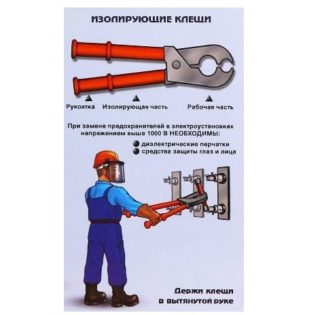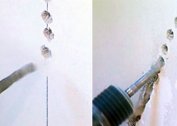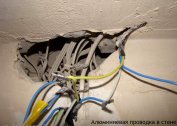When working in electric networks and on existing electrical installations, according to the requirements of the Electrical Installation Code, electrical protection means are necessarily used. They are designed in such a way as to guarantee the safety of operational personnel when working at electrical substations and other facilities. To understand the structure and features of their application, it is important to familiarize yourself with the existing classification of protective equipment.
Classification of electrical protective equipment
Electrical protective equipment is classified according to such features as functionality and voltage value in networks, where according to the PUE their use is considered mandatory. In accordance with the first of these factors, they are all divided into primary and secondary equipment. By the type of networks where these tools are used selectively, the following options are distinguished:
- The main and additional equipment for networks with an operating voltage below 1000 Volts.
- Exactly the same classification is adopted according to the PUE for power lines above 1000 volts.
In all these cases, the combined use of basic electrical protective equipment and their complementary equipment and equipment is practiced.
By the method of application, they are all divided into individual and collective protective items, the purpose of which is clear from their name. As a separate category, means are considered for protection against e / m fields, as well as for individual purposes. The latter are necessary to create safe working conditions for each individual member of the team of electricians serving the high-voltage line or electrical installation.
Equipment check
In order to maintain protective equipment in working condition, according to the EMP, systematic accounting and periodic testing are organized. For this purpose, representatives of the TB service will start a special journal at any operating facility, in which the following mandatory information is indicated:
- name;
- inventory number;
- date of the last and subsequent test.
To identify damaged and in need of testing equipment, systematic inspections are organized.
The frequency of inspections of all categories of protective equipment is established by the administration of each specific object, the exact dates are approved by its head. Upon completion, the results of the inspection are also recorded in the logbook. In addition, all regularly used electrical protective equipment is checked immediately before starting work. With this approach, any employee, as necessary (during the liquidation of an accident or during operational switching), is always sure of their availability and willingness to perform their functions.
Upon completion of the next test, a special tag must be attached or glued on each sample of protective equipment for an electrician.
The tag indicates:
- voltage and current values used during testing;
- exact date of the next product check;
- the name of the unit to which it is assigned;
- inventory or serial number.
All this data duplicates the information in accordance with which the means of protection in the journal are kept.
General Terms of Use
The procedure for the use of electrical protective equipment and gear is described in detail in the regulatory documentation regarding compliance with safe working practices in installations and switchboards. The requirements of the PUE provide for the following rules for their use:
If you need to work with a specific inventory, first of all, its serviceability (suitability for operation) is carefully checked.
- The appearance of the protective agent should be carefully examined. It does not allow the presence of any pollution, as well as damage to the case.
- A mandatory requirement is the inadmissibility of the use of insufficiently dry rubber products (with traces of fluid leakage, for example). They are not recommended for use in winter frost and during rainfall.
- Any protective equipment must have a verification mark indicating the date of the next test.
In case of violation of at least one of these points, the available equipment is unsuitable for use, since accidental damage to a person is possible when working with it. According to current regulations, it is removed from the kit in order to troubleshoot or conduct unscheduled tests.
When planning work operations and operational changes in rooms with a high level of humidity, rubber protective products designed specifically for this purpose are allowed to be used.
Individual species requirements
According to the PUE, the general set of protective equipment includes not only special equipment, but also special current tools. Its main purpose is to protect a person working in electric networks from direct contact with high potential. For specific types of protective equipment of any type, a number of special requirements are presented below:
- Individual items included in the equipment package (rubber gloves, for example, as well as rubberized shoes and other things) are stored in a perfectly clean condition. Only in this case, they are able to perform their functions, consisting in the reliable isolation of the human body from open conductive parts of electrical equipment.
- Protective devices with gripping handles (they are used when working in electrical installations with any voltage) must have restrictive rings on the holders.
- With a tool, he grabs the handles only in areas located up to the restrictive ring.
The last requirement is due to the fact that the standards determine the maximum permissible clearance to live parts, which is considered safe. In this case, special attention is paid to the insulated part of the holder, the length of which is made sufficient to provide guaranteed protection against electric shock.
All means used in servicing power supply systems are designed to operate in a given voltage range. As a rule, this parameter is applied on the tool body or in a special place of protective equipment. The PUE separately states that its real value often differs from the declared face value, so you should focus on the value taken with a small margin.
The main types
 The main requirement for protective equipment - their insulation must withstand the rated voltage of existing electrical installations for a long time. In addition, they must ensure the safety of work not only on disconnected live parts, but also on those sections of lines that are currently connected to the network. The inventory and equipment used in power circuits up to 1000 Volts, it is customary to include the following items:
The main requirement for protective equipment - their insulation must withstand the rated voltage of existing electrical installations for a long time. In addition, they must ensure the safety of work not only on disconnected live parts, but also on those sections of lines that are currently connected to the network. The inventory and equipment used in power circuits up to 1000 Volts, it is customary to include the following items:
- rubber gloves with good dielectric protection;
- special tool with securely insulated handles;
- special pliers and rods;
- High voltage protected potential indicators.
The first two positions are the easiest way to protect a person from exposure to dangerous voltages. The more complex instruments related to the professional activities of high-voltage laboratory workers are the last three positions. They are used during operational switching associated with the following actions:
- disconnector management;
- replacement of burnt fuses;
- installation of elements of arresters and other operations.
Insulating pincers are used if it is necessary to replace fuses in existing electrical installations up to and above 1000 Volts. When working with them, it is necessary to use additional protective equipment (gloves and glasses). Voltage indicators are in demand when it is necessary to verify its presence or absence at the point being checked. They are available in two versions:
- bipolar devices that fix the potential during the flow of the active current component;
- single pole indicators that only operate when a capacitive component is present.
To this category, but only for circuits above 1000 Volts, it is customary to include rods and pincers of all kinds, as well as other special devices.
Additional inventory
Additional electrical protective equipment used in the maintenance of electrical installations with voltages up to 1000 Volts, traditionally include:
- special dielectric galoshes and rugs;
- special insulating supports and auxiliary pads;
- insulating caps.
They got their name from the direct purpose, which consists in the additional protection of the operational personnel involved in the work. The specified inventory as such is not able to provide full protection against all damaging factors, but together with fixed assets it is quite effective. Under certain operating conditions, it protects operating personnel even from touch and stride potentials.
Personal Protective Equipment
Equipment for personal protection of workers:
- protective helmets to protect the head of working personnel;
- glasses and shields to protect eyes and face;
- gas masks of various types and classic respirators for respiratory protection;
- cotton gloves and mittens to protect hands.
This list also includes protective equipment that prevents the accidental fall of a working person from a height. These include safety belts and safety ropes.
Protective equipment is a mandatory attribute of special units involved in the maintenance of existing electrical installations. Protective tools and special equipment are also in demand during operational switching and urgent repair work.









